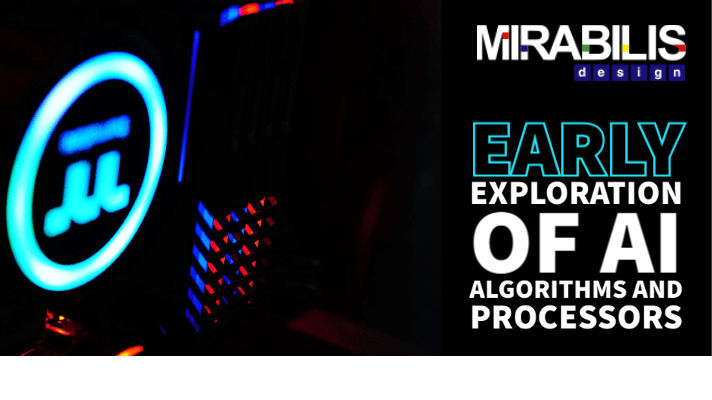 Early Exploration of AI Algorithms and Processors
Early Exploration of AI Algorithms and Processors
Mirabilis Design has been at the forefront of Artificial Intelligence and Machine Learning design, and analysis. Model-based system analysis using VisualSim provides a platform to quickly evaluate the quality of the AI algorithm in an application, test for worst-case scenarios and generate the implementation requirements.
To test the quality of an algorithm, VisualSim enables designers and mathematicians to create a timed automata model of the given algorithm and then targets the algorithm sequence against a set of resources that contains processing, communication, and storage. The model is simulated for various criteria such as Quality of Service, timing deadline, resource efficiency, and energy consumption. Both the task graph and the resources can be modified to experiment with different hardware-software topologies, mapping strategies, scheduling, and algorithmic sequence. The purpose is to understand the optimal operation based on the requirements. The key aspects of the testing are the variation over time, failures events, unexpected inputs, and non-availability of coefficients for the computation.
Mirabilis Design has been used to design a variety of electronics that are used in space, defense, and, high-performance computing. The specialty of VisualSim is its ability to experiment with the mapping of DSP and AI algorithms that will determine whether a hardware, software or hybrid implementation is required for the target application. Once the VisualSim model is set-up, the user can configure different applications using the AI or DSP algorithm and map to different hardware architectures. The other feature of VisualSim is that the same model can be tested for timing, energy consumption, and functionality without the need for any structural modification. The system model can incorporate details of the entire system including RF, power generators, batteries, MEMS and other system-level details. At the system-level, the AI algorithm can be tested to verify if it has activated the right control system or is sending the responses within the timing deadline.
VisualSim Architect brings a formality to the front-end design by establishing a model-based system analysis. The system analysis bridges the gap between requirements gathering and product integration by having a reference prototype that can be used to make engineering and planning decisions. This testbed serves as a feasibility platform for new ideas, early experimentation, and continuous validation.